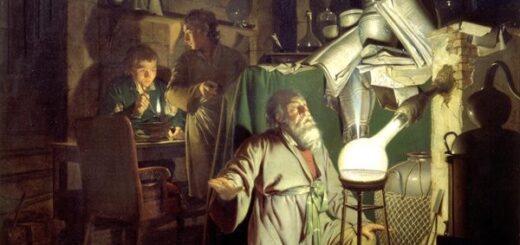The Philosopher of Paradoxes – ZENO OF ELEA
Zeno of Elea (c. 490 – 430 BCE) is famous for his paradoxes. A member of the Eleatic school of philosophy and a student of Parmenides, he agrees with and supports his teacher’s theory. To do this, the Eleatic philosopher uses paradoxes. This is why Aristotle refers to him as the first dialectician, the one who “invented dialectics.”
Zeno attempts to prove the unity and stability of existence by showing that its opposite is logically contradictory. More than forty aporias are associated with Zeno’s name, some of which have survived to the present day.
An aporia is a situation that is logically possible but cannot occur in reality. An aporia is a type of paradox. Zeno’s aporias analyze the nature of motion and multiplicity, and from a logical standpoint, they sometimes demonstrate their absurdity.
One of Zeno’s paradoxes, known as “Zeno’s Arrow,” is formulated as follows: a flying arrow is motionless because at each moment in time, it occupies the same position, i.e., it is stationary. Therefore, if the arrow is stationary at every moment, it is stationary in all moments, meaning that there is no moment in time in which the arrow is in motion.
At first glance, this paradox seems to prove the impossibility of motion and that the arrow is at rest. However, this is not the case. It shows that humans are incapable of fully grasping motion and defends the unity of existence.
“Zeno’s Arrow,” also known as “The Flying Arrow,” touches on one of the central issues in physics—the nature of time. It is precisely the Eleatic philosopher who first theoretically formulates the problem of the nature of time. This problem has been the subject of interest for many philosophers and scientists from ancient times to the present day.
When we think of time, we first think of units like hours, days, months, and years. However, these are measurements based on our reality or imagination. Our day consists of 24 hours because the Earth revolves around itself once in that amount of time. On Jupiter, this cycle takes 9 hours and 55 minutes, while on Neptune, it takes 15 hours and 57 minutes.
As we know, a year consists of 365 days, as our planet makes a complete orbit around the Sun in that time. On Mercury, this period lasts 88 days, and on Jupiter, it lasts 11.9 years. Therefore, time differs when measured on planets outside of Earth. This is just one aspect of the problem of the nature of time.
Thomas Hobbes claims that time is formed in thought, not in objects. The other English philosopher, Newton, divides time into two types—absolute and relative.
Absolute or “absolute time” is the time that exists in nature, measured in a mathematical way, flowing uniformly without any external relation. This time is called “duration.” Relative time, on the other hand, is what is perceived through our senses, the time we use in everyday life as opposed to the scientific concept of time—such as hours, days, months, and years. In this way, Newton plays a key role in the development of the scientific concept of time. According to his theory, absolute time is the same everywhere and at all times. Time is like an arrow and only moves in one direction—forward.
Einstein’s theory of relativity took a step further than Newton’s concept of absolute time. This theory discovered that time changes inversely with speed. Time is similar to space, and together with space, it forms a unified four-dimensional fabric, scientifically known as the space-time continuum. Large cosmic bodies stretch and compress this fabric, effectively bending or deforming it.
Thus, as one approaches cosmic bodies, gravity increases. This results in a decrease in the speed of time. Therefore, the more massive an object is, the slower time flows around it. In this way, Einstein reveals that absolute time does not exist, bringing us closer to solving the problem Zeno formulated.
Let’s return to Zeno’s paradoxes.
To reach the end of the road, one must first pass half of it, then half of the remaining distance, then half of that, and so on, infinitely. Because every number can be halved. This paradox, called the Dichotomy, uncovers the inconsistency in the mathematical model of motion.
In this and other paradoxes, Zeno defends the concept of a singular, motionless existence. According to him, the opposite—multiplicity and movement—leads to absurd conclusions. Therefore, they should be rejected. The next paradox supports this idea.
Imagine Achilles runs 10 times faster than the tortoise and starts 100 steps behind. As Achilles covers this distance, the tortoise will have moved ahead by 10 more steps. While Achilles covers the 10 steps that the tortoise moved, the tortoise will move 1 more step, and the process repeats. Thus, even though Achilles runs faster than the tortoise, he will never catch up with it. This is the Achilles and the Tortoise paradox.
Zeno does not deny the existence of motion; he argues that the Eleatic school, to which he belongs, suggests that it is impossible to prove the non-existence of something. Zeno simply shows that the mathematical and physical concepts of his time are logically contradictory. His paradoxes also demonstrate that our senses, which provide evidence of multiplicity and motion, do not align with logic and reason. Logic and reason, however, are correct. Therefore, our senses and the thoughts based on them are flawed.
Zeno also opposes the principle of multiplicity, one of philosophy’s earliest problems. To demonstrate this, he uses the following logical chain: if existence consists of multiplicity, it must be divisible into parts. This must be possible. Once these parts are divided to a certain degree, they will no longer have a size. After this point, they will be dimensionless. Existence consists of divisible parts, and parts that cannot be divided have no size. Therefore, their total also has no size. On the other hand, parts cannot be dimensionless, because if they were, a whole existence could not be created from them. Even if existence were divided infinitely, its parts would still have size.
Thus, existence consists of an infinite number of parts, which implies that it is infinitely large. Therefore, if existence is made up of multiplicity (i.e., a total), it has no size and is simultaneously infinitely large. This is logically contradictory. Zeno’s paradoxes are some of the earliest examples of logical reasoning. This form of reasoning, based solely on deduction, places Zeno ahead of the sages of his time. During deduction, various arguments form a logical chain, leading to a conclusion.
Zeno’s arguments can be seen as early examples of the logical proof method called reductio ad absurdum (reduction to absurdity), where the counterargument to a claim is shown to lead to absurdity or contradiction. For example, if the Earth were flat, people would fall off its edge. While some may disagree, this is absurd. Therefore, the Earth cannot be flat.
The paradoxes created by Zeno 25 centuries ago remain relevant in modern times. They address deep issues of time, space, and infinity. These mind-bending paradoxes have led to the creation of various theories to resolve them, including atomism. In the development of atomism, one of the greatest intellectual achievements of humanity, Zeno’s paradoxes play a central role.
Zeno’s paradoxes also laid the groundwork for new argumentation, logic-based analysis, and the method of logical deduction. As a result, they contributed to the development of both philosophy and mathematics, especially in the areas of number theory and axiomatic geometry.
Zeno participated in a conspiracy against the tyrant of Elea and was imprisoned. The tyrant was a ruler who had seized power in ancient Greece through force. According to the legend, despite being tortured during his interrogation, Zeno never betrayed any of his companions, and even bit his own tongue to spit in the tyrant’s face. Naturally, such defiance led to his execution.
According to some sources, Leucippus (c. 500–440 BCE), one of the founders of atomism, was either Zeno’s or Parmenides’ student. Very little information about this philosopher from Miletus has survived to this day.
Leucippus proposed that reality consists of small, indivisible particles, or atoms, and void, or vacuum. These tiny particles move in the void. An atom is a small, indivisible, imperishable, and indestructible particle. Because the vacuum is infinite, atoms are numerous. Without the vacuum, motion would not be possible. Atoms are infinitely variable in form and constitute the origin of existence.
Leucippus laid the foundation for three key scientific concepts: atom, absolute void, and mechanical necessity. We are already familiar with the first two concepts. The third concept, mechanical necessity, forms the basis of the law of causality. Causality is the relationship between cause and effect, a relationship that has intrigued thinkers since ancient times. Plato, for example, says that a cause is necessary for the creation of anything, as creation cannot occur without a cause. Similarly, Zeno states, “No object is created without a cause; everything arises from something and in the face of necessity ”.
Zeno and the other members of the Eleatic school believed that motion and void were impossible. Leucippus, however, argued that void is precisely what makes non-being possible. He concluded that the void is filled with indivisible, unchanging atoms that differ only in form and size. According to him, the constantly moving atoms collide and merge to create the surrounding objects.
Leucippus’ student Democritus further developed atomism. These two philosophers identified the atom, perhaps the greatest scientific discoverers in history, and placed it on the philosophical table for discussion.


